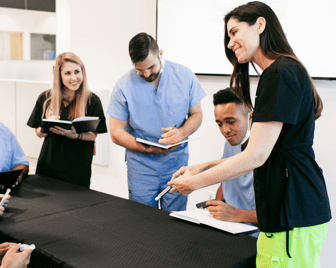 On April 30, 2018, the California Supreme Court unanimously ruled to establish clearer distinctions between W-2 employees and 1099 independent contractors. Additionally, they made the process more difficult for employers to classify an employee as an independent contractor through an updated, more restrictive "ABC" test.
On April 30, 2018, the California Supreme Court unanimously ruled to establish clearer distinctions between W-2 employees and 1099 independent contractors. Additionally, they made the process more difficult for employers to classify an employee as an independent contractor through an updated, more restrictive "ABC" test.
While this ruling is specific to California, the discussion around classifying independent contractors is not new. Massachusetts adopted similar classification restrictions and an updated "ABC" test in 2004. Since then, more than half of the states in the U.S. have implemented some variation of the test when classifying independent contractors in an unemployment context (this chart from 2016 outlines the variations).* With California's most recent description of what defines an independent contractor, the risk of misclassifying your employees is heightened. This makes it more imperative than ever for medical device, diagnostic and drug manufacturers to evaluate the roles their per-diem field teams are operating under and determine whether they need to reclassify them from 1099 employees to W-2 employees.
Effective in California, correctly identified independent contractors must match all three criterion of the "ABC" test:
- (A) The worker is free from the type and degree of control and direction the hiring entity typically exercises over its employees,
- (B) The worker performs work outside the scope of the hiring entity’s business, and whose work therefore would not ordinarily be viewed by others as working in the hiring entity’s business, and
- (C) The worker is customarily engaged in an independently established trade, occupation, or business, taking such steps as incorporating his business, getting a business or trade license or advertising.
In the medical device, diagnostic and drug industries, employees administering field service and clinical in-servicing tasks need to be provided explicit training on device utilization. When consultants are not required to take or follow product training, there is an increased risk of misguided messaging and associated liability. Additionally, the extent to which an employer can schedule and oversee the independent contractor is questioned and can potentially cause issue with the contractor, client and law. Other risks associated with disregarding the narrowed rules include inaccurate brand representation or brand degradation, as there is limited control over directing what 1099 employees can or can not publicly state.
Novasyte encourages medical device, diagnostic and pharma manufacturers to reassess their work arrangements with their per-diem employees and with their partner organizations to ensure employees are correctly classified based on their role and responsibilities. Novasyte takes great pride in the long-standing decision to only employ field-based, per-diem consultants on a W-2 basis. When taking on clients with a 1099 working arrangement, we rollover each employee to the Novasyte team, where they operate on a W-2 basis. This mitigates any potential legal and human resources risks with employee misclassification. Choosing a partner organization like Novasyte who builds teams of only W-2 employees to support your contract clinical, field technical and field action needs on a flexible, per-diem basis will significantly reduce the potential for penalty, brand degradation and legal risk.
More information on Novasyte's Contract Clinical Program can be found here.
*Note: The chart does not reflect the updated California standards of the "ABC" test.
Sources:
1. Eaton, D. (2018, May 14). California Supreme Court narrowly defines independent contractor. The San Diego Union Tribune. Retrieved from http://www.sandiegouniontribune.com/business/economy/sd-fi-eaton-20180514-story.html
2. Shea, R. M. (2005, October 5). Serious problems and difficult choices for businesses in Massachusetts. The Massachusetts Independent Contractor Law. Retrieved from http://www.mbbp.com/news/mass-independent-contractor-law.
3. Pattison, R. M. & Sanchez-Moran, A. L. (2018, May 7). California Supreme Court broadens definition of employee in independent contractor analysis. Jackson Lewis. Retrieved from https://www.jacksonlewis.com/publication/california-supreme-court-broadens-definition-employee-independent-contractor-analysis





